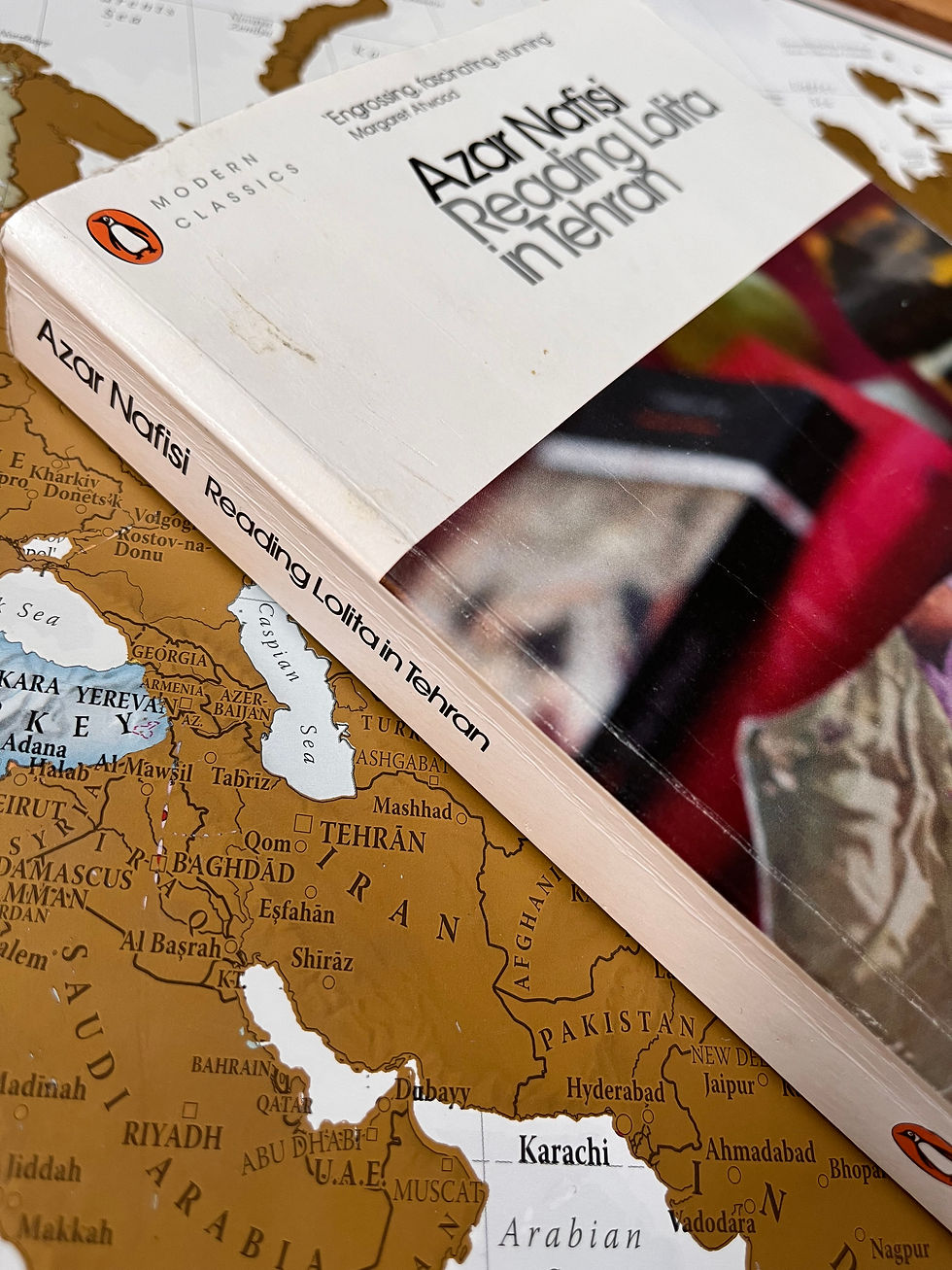Reading Lolita in Tehran by Azar Nafisi
- theworldthroughbooks

- Jan 9, 2023
- 2 min read
Updated: Jan 2, 2024

Every Thursday morning in a living room in Iran, over tea and pastries, eight women meet in secret to discuss forbidden works of Western literature. As they lose themselves in the worlds of Lolita, The Great Gatsby and Pride and Prejudice, gradually they come to share their own stories, dreams and hopes with each other, and, for a few hours, taste freedom. Azar Nafisi’s bestselling memoir is a moving, passionate testament to the transformative power of books, the magic of words and the search for beauty in life’s darkest moments.
Reading Lolita in Tehran is ambitious but effective. The secret study group is the constant throughout the book. Outside the secret group, the book weaves through other aspects of life in Iran, including Nafisi’s experience of pre-revolution Iran and studying abroad, her students’ experiences of violence and oppression post-revolution (which is all they have ever known), the eight-year Iran-Iraq war, and some lively literary analysis of the works mentioned in the book. The lives of Nafisi and her students develop differently throughout the book, and the focus of their conversations is the different ways they are navigating through their limited rights as women in 1980s Iran.
Themes from the books they study are compared to the reality of the students’ lives, such as one discussion of their views on marriage in the context of Pride and Prejudice. Nafisi also writes of the wide-ranging opinions expressed by her students in her wider university lectures about the literature they are studying, often leading to heated debates. One controversial character is Henry James’ Daisy Miller who some of the students view as “unreasonable” and “decadent” (a serious faux pas in post-revolution Iran) but whom others envy for her courage. Their views about The Great Gatsby vary so much that Nafisi recounts a lecture where the students participate in a mock trial of the book.
Incidentally, I thought it was interesting that American literature was taught at all in a notoriously anti-American regime. It’s particularly fascinating to view Western classics like The Great Gatsby through the eyes of Nafisi’s most conservative students.
I found this book a little choppy, and the lapses into literary analysis sometimes took the narrative off on quite long tangents. But it’s definitely worth a read as it’s an absorbing insight into the Iranian regime, from women’s perspectives, which is especially relevant now in light of the recent protests following the death of Mahsa Amini.
Finally, a word of warning: Reading Lolita in Tehran contains spoilers from most of the books mentioned so I recommend reading Lolita, Pride and Prejudice, Daisy Miller and The Great Gatsby before you read this one!



Comments